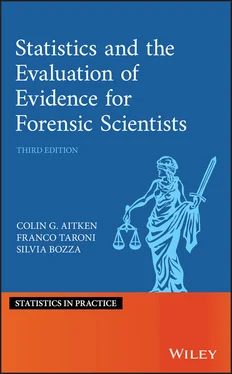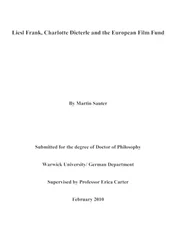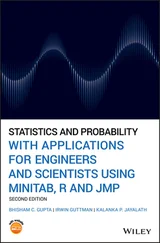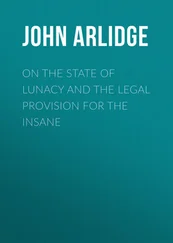Franco Taroni - Statistics and the Evaluation of Evidence for Forensic Scientists
Здесь есть возможность читать онлайн «Franco Taroni - Statistics and the Evaluation of Evidence for Forensic Scientists» — ознакомительный отрывок электронной книги совершенно бесплатно, а после прочтения отрывка купить полную версию. В некоторых случаях можно слушать аудио, скачать через торрент в формате fb2 и присутствует краткое содержание. Жанр: unrecognised, на английском языке. Описание произведения, (предисловие) а так же отзывы посетителей доступны на портале библиотеки ЛибКат.
- Название:Statistics and the Evaluation of Evidence for Forensic Scientists
- Автор:
- Жанр:
- Год:неизвестен
- ISBN:нет данных
- Рейтинг книги:3 / 5. Голосов: 1
-
Избранное:Добавить в избранное
- Отзывы:
-
Ваша оценка:
Statistics and the Evaluation of Evidence for Forensic Scientists: краткое содержание, описание и аннотация
Предлагаем к чтению аннотацию, описание, краткое содержание или предисловие (зависит от того, что написал сам автор книги «Statistics and the Evaluation of Evidence for Forensic Scientists»). Если вы не нашли необходимую информацию о книге — напишите в комментариях, мы постараемся отыскать её.
he leading resource in the statistical evaluation and interpretation of forensic evidence
The third edition of
is fully updated to provide the latest research and developments in the use of statistical techniques to evaluate and interpret evidence. Courts are increasingly aware of the importance of proper evidence assessment when there is an element of uncertainty. Because of the increasing availability of data, the role of statistical and probabilistic reasoning is gaining a higher profile in criminal cases. That’s why lawyers, forensic scientists, graduate students, and researchers will find this book an essential resource, one which explores how forensic evidence can be evaluated and interpreted statistically. It’s written as an accessible source of information for all those with an interest in the evaluation and interpretation of forensic scientific evidence.
Discusses the entire chain of reasoning–from evidence pre-assessment to court presentation; Includes material for the understanding of evidence interpretation for single and multiple trace evidence; Provides real examples and data for improved understanding. Since the first edition of this book was published in 1995, this respected series has remained a leading resource in the statistical evaluation of forensic evidence. It shares knowledge from authors in the fields of statistics and forensic science who are international experts in the area of evidence evaluation and interpretation. This book helps people to deal with uncertainty related to scientific evidence and propositions. It introduces a method of reasoning that shows how to update beliefs coherently and to act rationally. In this edition, readers can find new information on the topics of elicitation, subjective probabilities, decision analysis, and cognitive bias, all discussed in a Bayesian framework.

 (a fully specified single event or sentence, whose truth or falsity is, for whatever reason, unknown to that person). (p. 45)
(a fully specified single event or sentence, whose truth or falsity is, for whatever reason, unknown to that person). (p. 45) disks. The consignment is said to be of size
disks. The consignment is said to be of size  . It is desired to make inferences about the proportion
. It is desired to make inferences about the proportion  (
(  ) of the consignment which is pirated. It is not practical to inspect the whole consignment so a sample of size
) of the consignment which is pirated. It is not practical to inspect the whole consignment so a sample of size  , where
, where  is inspected.
is inspected. of the consignment that is pirated is unknown but fixed. The data, that is the number of CDs in the sample that are pirated, are variable. A so‐called confidence interval is calculated. The name confidence is used since no probability can be attached to the uncertain event that the interval contains
of the consignment that is pirated is unknown but fixed. The data, that is the number of CDs in the sample that are pirated, are variable. A so‐called confidence interval is calculated. The name confidence is used since no probability can be attached to the uncertain event that the interval contains  . These ideas are discussed further in Chapter 4.
. These ideas are discussed further in Chapter 4. , say, occurs is defined as the relative frequency of the number of occurrences of event
, say, occurs is defined as the relative frequency of the number of occurrences of event  compared with the total number of occurrences of all possible events, over a long run of observations, conducted under identical conditions of all possible events. The limitations of such a definition are presented in Section 1.7.4.
compared with the total number of occurrences of all possible events, over a long run of observations, conducted under identical conditions of all possible events. The limitations of such a definition are presented in Section 1.7.4. times. It is not known if the coin is fair. The outcomes of the
times. It is not known if the coin is fair. The outcomes of the  tosses can be used as information from which the probability of a head occurring on an individual toss may be assigned. There are two possible outcomes, heads (
tosses can be used as information from which the probability of a head occurring on an individual toss may be assigned. There are two possible outcomes, heads (  ) and tails (
) and tails (  ). Let
). Let  be the number of
be the number of  and
and  be the number of
be the number of  such that
such that  Then the probability of tossing a head on an individual toss of the coin is defined as the limit as
Then the probability of tossing a head on an individual toss of the coin is defined as the limit as  of the fraction
of the fraction  . The frequentist approach relies on a belief in the long‐run repetition of trials 3 under identical conditions. This is an idealised situation, seldom, if ever, realised in practice. More discussion on the interpretation of such a result is given in Section 3.6.
. The frequentist approach relies on a belief in the long‐run repetition of trials 3 under identical conditions. This is an idealised situation, seldom, if ever, realised in practice. More discussion on the interpretation of such a result is given in Section 3.6.










